And Now, A Rational Interlude With The Mühle Glashütte SAR Rescue Timer
An unsung hero of the tool watch world.
The first time I remember seeing a Mühle Glashütte SAR Rescue Timer was more than 20 years ago, on Timezone.com, when it was already something of a cult watch for tool watch lovers who wanted something a little off the beaten path. Like a lot of enthusiasts, I was won over by the sense of purposefulness in the design, to say nothing of the high specs – while not a diver’s watch per se, the SAR Rescue Timer certainly would have no trouble handling rough use and repeated immersion. The “SAR” in the name stands for Search And Rescue, and for many years Mühle Glashütte has had a partnership with the German Maritime Search And Rescue Service, which handles search and rescue operations in the North and Baltic Seas, and operates nearly sixty rescue cruisers as well as rescue helicopters.
The relationship with Die Deutsche Gesellschaft zur Rettung Schiffbrüchiger or DGzRS, as it’s called in German, came about as a result of Mühle Glashütte’s history as a maker of precision instruments for the Glashütte watchmaking industry, and precision gauges for the automotive industry. The history of the company – which has had several incarnations – goes all the way back to 1869, when founder Robert Mühle established the company, Robert Mühle Glashütte, after finishing his apprenticeship with Moritz Grossmann, one of the founding fathers of watchmaking in Glashütte. The company was expropriated after the war, and absorbed into an instrument company called Messtechnik Glashütte (Glashütte Measurement Technology) with most of its equipment dismantled and moved to the Zeiss factory in Jena, which in its turn would be dismantled, with the equipment moved to the USSR for the Kiev camera factory (Zeiss would eventually be re-established as Carl Zeiss AG, in Oberkochen, where it is still headquartered)
Meanwhile, Hans Mühle founded a new company, Ing. Hans Mühle, which continued to produced speedometers and other precision instruments. Ing. Hans Mühle would in its turn, become part of VEB Feinmechanik Glashütte (‘Glashütte Precision Engineering). Eventually, that company was also absorbed into a state-owned business – the famous VEG Glashütter Uhrenbetriebe, or GUB; this occurred in 1980.
It was at this point that Hans-Jürgen Mühle, who had taken over who became sales manager of GUB, became responsible for distribution of, among other things, GUB marine chronometers and wristwatches in Eastern Europe. After German reunification, Hans-Jürgen Mühle launched the company, Mühle-Glashütte GmbH nautische Instrumente und Feinmechanik (the name by which the company is known today) in 1994, which continued to produce maritime timing equipment, and marine crhonometers. The company produced its first wristwatches in 1996, and in 2002, the SAR Rescue Timer was launched and it has been in production, and in use by DGzRS, ever since.
The SAR was developed by Mühle Glashütte in collaboration with the DGzRS managing director, Dr. Bernd Anders; the idea was to produce a sturdy, highly damage and water resistant watch suitable for coastal operations in the notoriously brutal environments in which the DGzRS operates. Originally, Mühle Glashütte proposed a dual time-zone design but give the relatively small area in which the DGzRS operates (Germany’s northern coastline is all in GMT +1) it was decided to produce a simple, time and date wristwatch. The final result was a 42.0 mm x 13.5 mm watch with a massively thick (4mm) sapphire crystal, a high visibility dial with large luminous markers on a white background, a heavily constructed case in matte-finished stainless steel, and a water resistance of 100 ATM, or 1000 meters. The magnifier for the date is on the inside of the crystal, to avoid having anything protruding which might meet with an accident. The bezel of the watch is protected by a distinctive rubber bumper.
Despite the fact that I’ve known about the SAR Rescue Timer for over two decades, this is actually the first time I’ve ever had a chance to handle one in the metal, and although I feel sure I must have seen one on someone’s wrist at some point, I can’t remember any such occasion. It was therefore extremely interesting to see, handle, and wear the watch. It makes a very strong first impression – the feeling you get from the overall presentation is exactly what you might expect from seeing pictures. This is a watch built with all the sense of massive, purposeful precision you get from a bank vault; as with the vault door, there is a certain aesthetic appeal but it’s the result of leaving aside anything other than purely practical considerations, and taking them to their logical conclusion. This is a watch that gives every impression of having been made by a company with a heritage much more oriented towards making precision instruments than watches per se; there are no extraneous fripperies whatsoever and everything from the submarine hull-like appearance of the case, to the heavy rubber strap and shrouded lugs with screws for attaching the strap to the case, speak to the thought given by Mühle Glashütte and DGzRS to making the most durable and legible possible watch, consistent with the operational requirements of the rescue service.
Despite the absolute pragmatism of the design, fit and finish are extremely precise; dial printing is crisp and clear, with sharply defined lume plots, stick hands with edges free of any machining marks, even under magnification (it is surprising how often the hands of some very expensive watches show tool marks on their edges) and a date wheel color matched to the dial which is easy to read thanks to the magnifier; you can tell the date at a glance. The crown sits at 4:00, to help keep the fit comfortable, and the crown guards are smoothly rounded (as is the rest of the case, there are no sharp edges or anything sticking out that might snag on something).
The strap tapers slightly to the folding clasp, which gives the same impression of overbuilt ruggedness and practicality you get from the rest of the watch. The rubber strap as delivered must be cut to fit; this is the first time – and I’m surprised to say this – that I’ve ever worn a watch with a cut-to-fit rubber strap. Doing so isn’t really any more troublesome that removing metal bracelet links (although how hard or easy that is depends in turn on how the links are attached to each other; split pin and collar attachments have probably been responsible for more swearing than a Quentin Tarantino script). I found that with a very sharp matte knife and straight edge, that it took maybe all of fifteen minutes to get the size right; as with links, you are well advised to take it one piece at a time (the ends of the strap are divided by grooves into equally sized segments. As long as you don’t take off too much to start with, you should be able to get a proper fit with very little trouble.
The screw-down caseback continues the submarine-hull impression you get from the case overall. The caseback is screwed into place via the six recesses for a caseback tool drilled into it, and it looks like something you’d seal before giving the order to dive (I should maybe take it easy with the submarine metaphors, though … after all this is a watch designed for rescue operations; if it’s at the depth at which subs operate, or deeper – 1000 meters is well below the test depth for military submarines – something’s gone seriously sideways).
Behind the caseback is a Sellita Sellita SW 200-1, which is a perfectly appropriate choice – a solid, time-tested movement, easy to service with no issues in terms of parts availability. If you own the SAR Rescue Timer and you want it serviced, though, you might want to let Mühle Glashütte handle it, just to make sure water resistance post-service is up to spec.
By the way there is a nice little enhancement to the movement – there’s a custom rotor but there is also a “woodpecker” style regulator sweep, which prevents the index from being jarred out of position (a real possibility with conventional, friction-fit indexes).
Just as with the front of the watch the caseback feels all business, with an obsessive devotion to utility and precision (maybe it’s all that German).
The SAR Rescue Timer, you will not be shocked to hear, glows like a bat out of hell. Super-LumiNova and lots of it, is a necessity on a watch designed for 24 hour maritime rescue operations; lights inside the bridge on the DGzRS rescue cruisers are kept low at night to improve visibility and in terms of legibility, a rescue operations watch, like a dive watch, needs all the help it can get.
It was an enormous pleasure to finally experience the SAR Rescue Timer after all these years … they say Don’t Meet Your Heroes but in this case, expectations were exceeded and then some. I’m not sure why the SAR Rescue Timer isn’t more talked about in tool watch circles – for sure, it’s as tough as they come and if unit watches are your thing, basically the entire production run of SAR Rescue Timers are unit watches; at the current price of $2399, you get something with more character than a clear eyed, sun wrinkled salty old sea dog telling tales of brave men and high seas at the bar. Maybe it’s the fact that it’s been around since 2002; maybe it’s the stoic disdain for flash or visual effects … who knows. I do know however, that the SAR Rescue Timer is exactly the opposite of a meme watch – a blast from the past that in the present day, offers exactly the kind of solid, unpretentious, high quality watchmaking (and a great history to boot) whose demise we so often lament. Long may she serve.

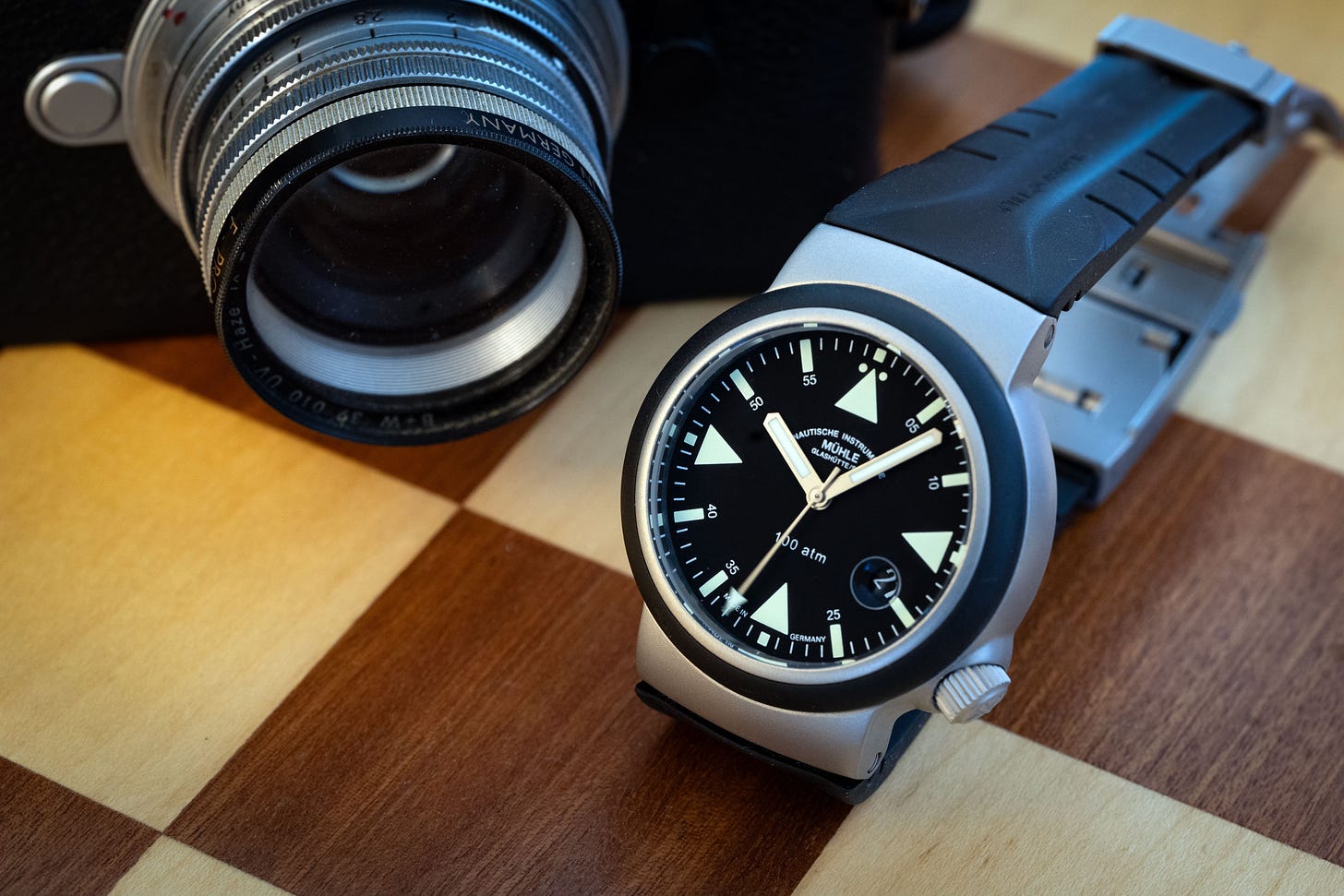
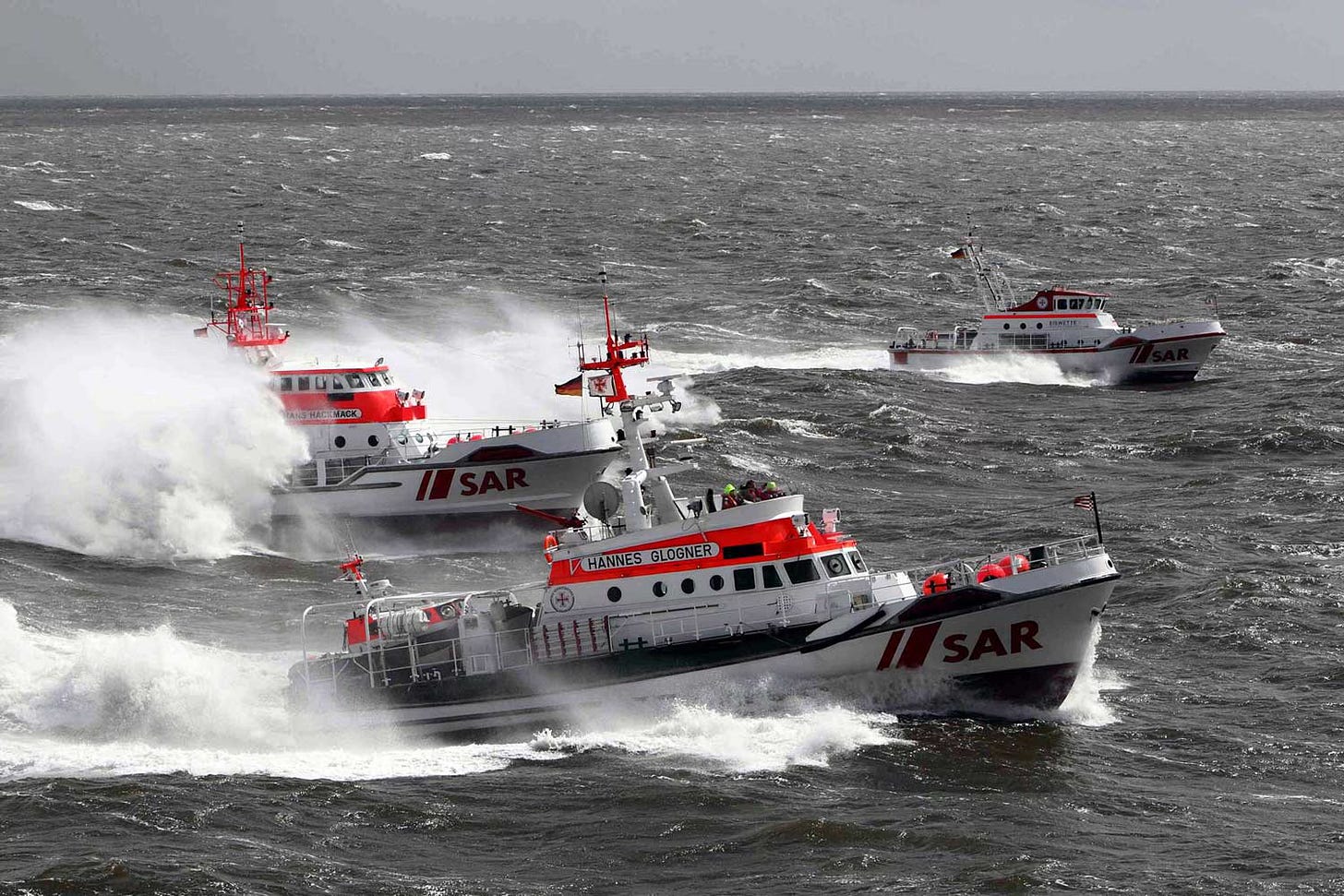
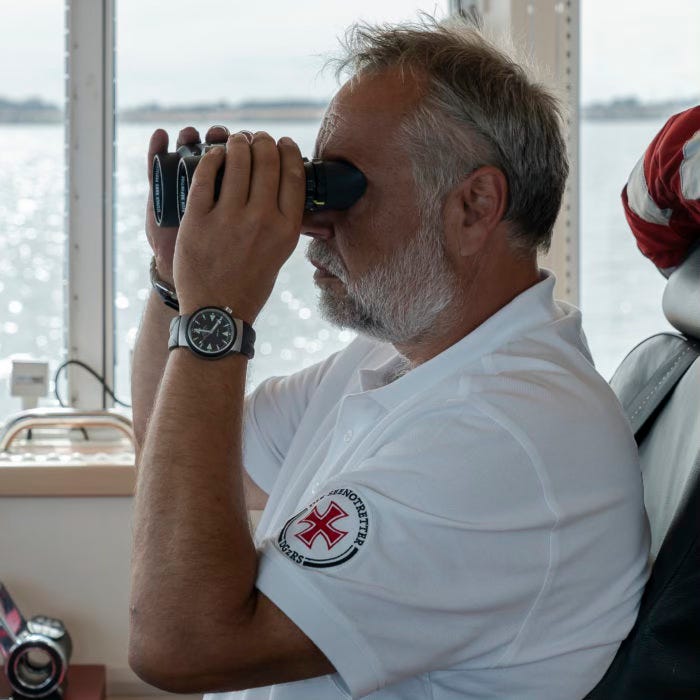
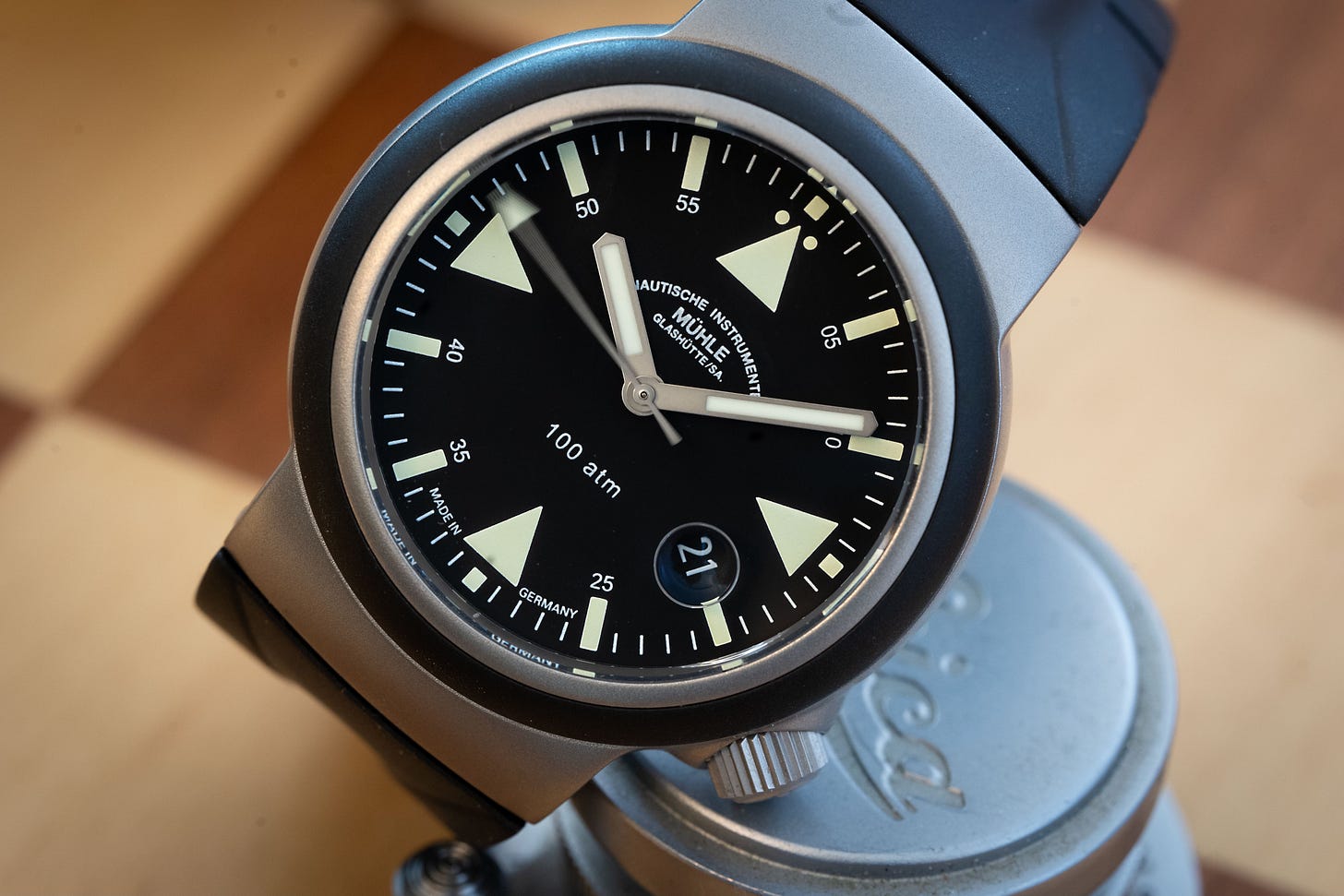
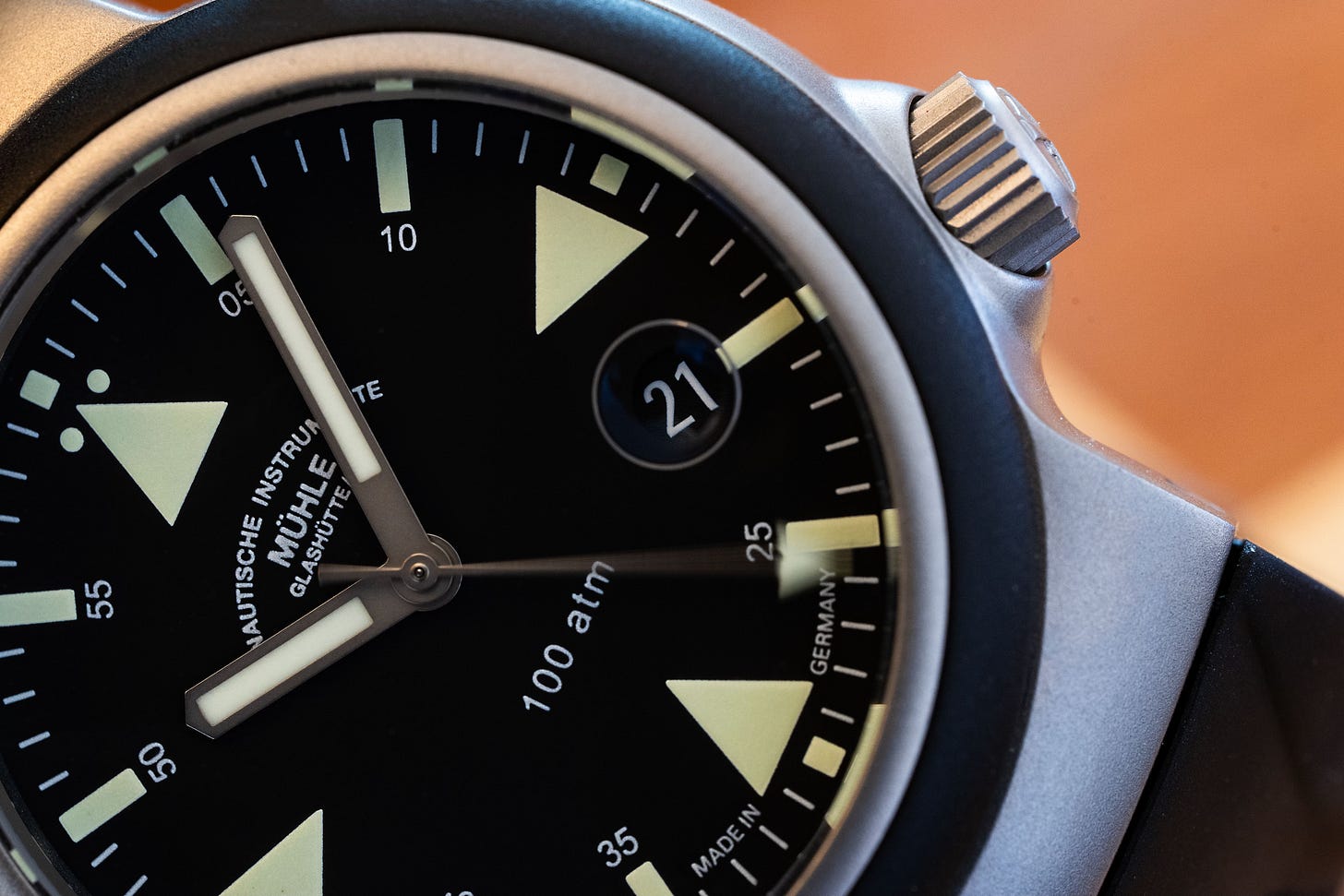
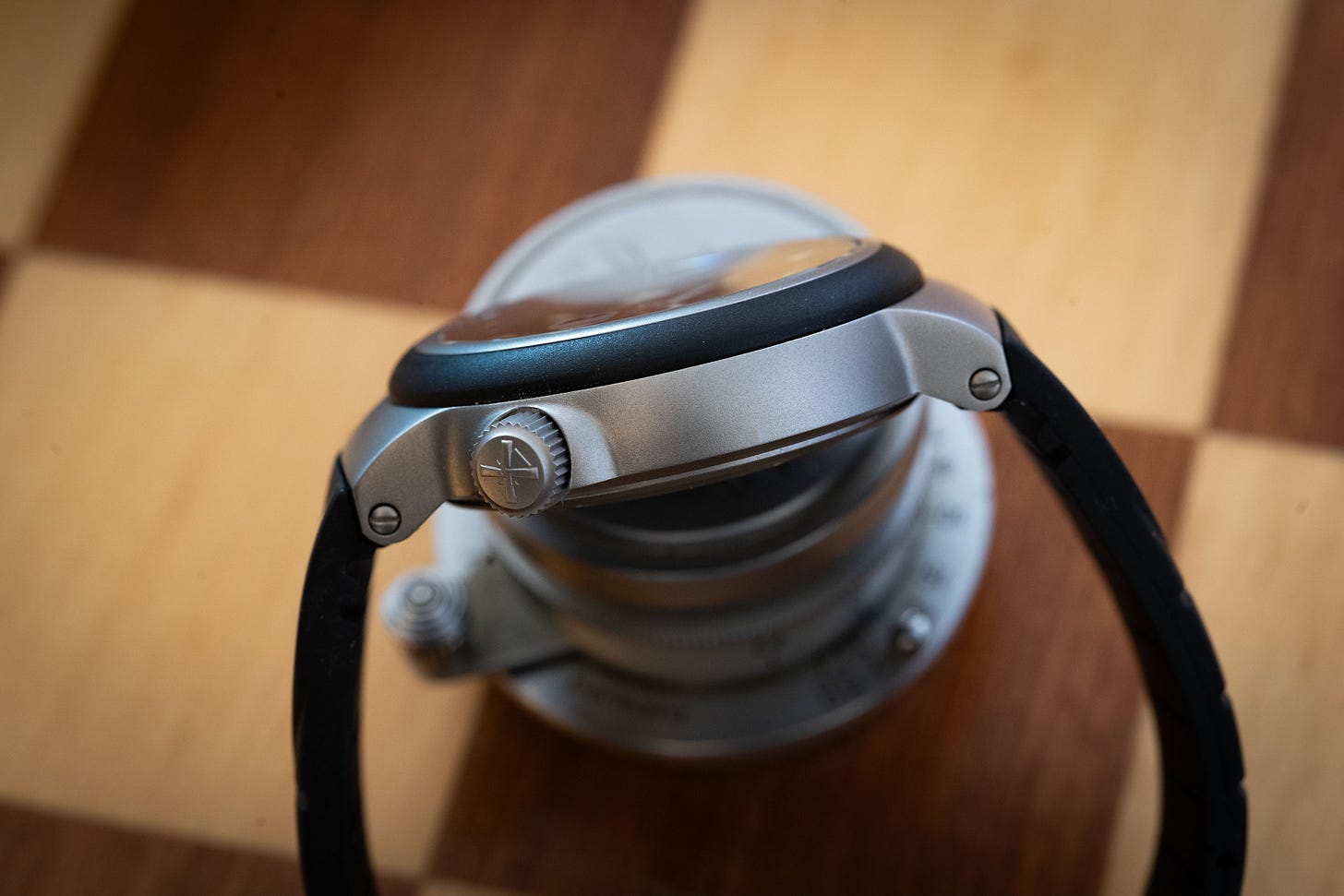
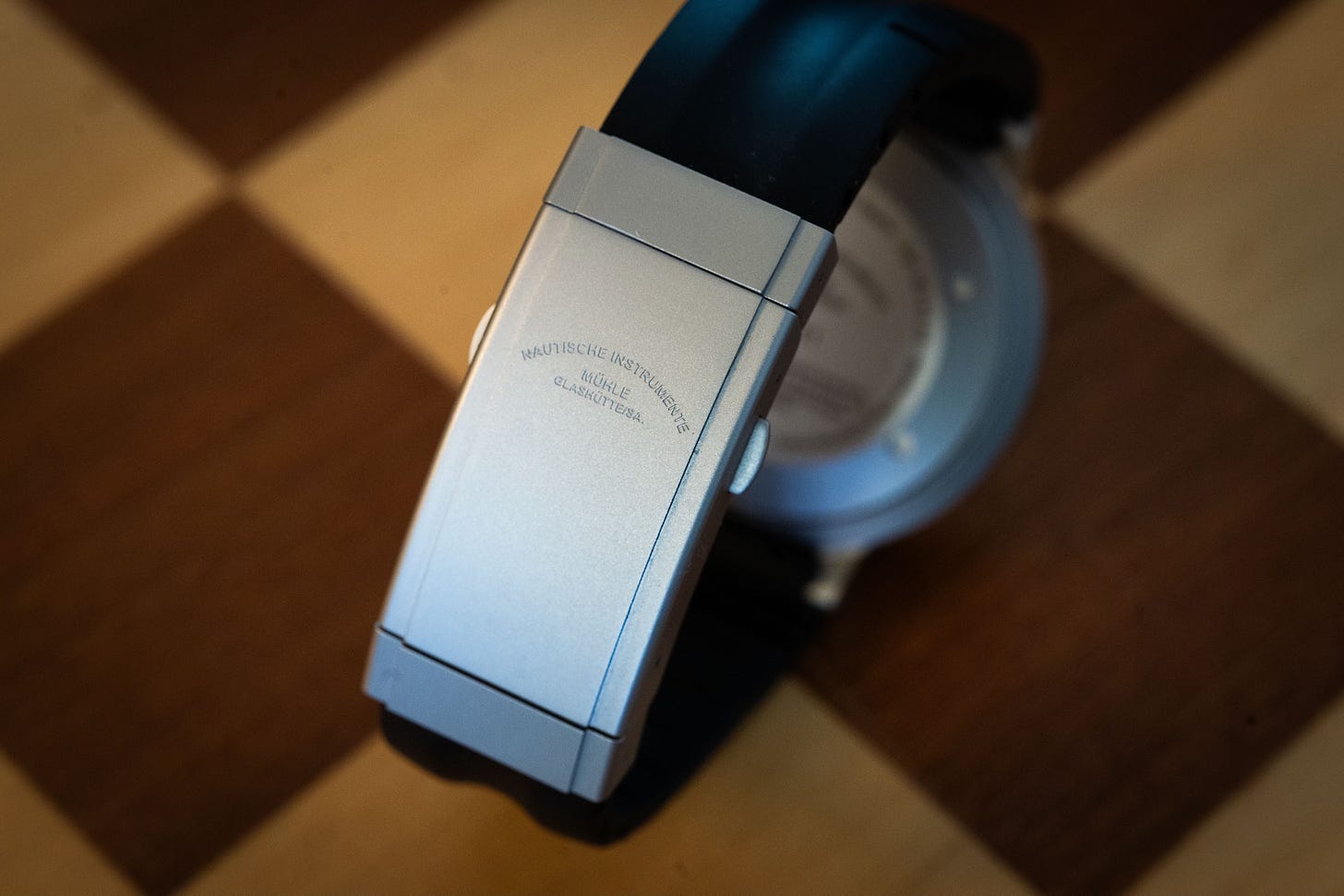
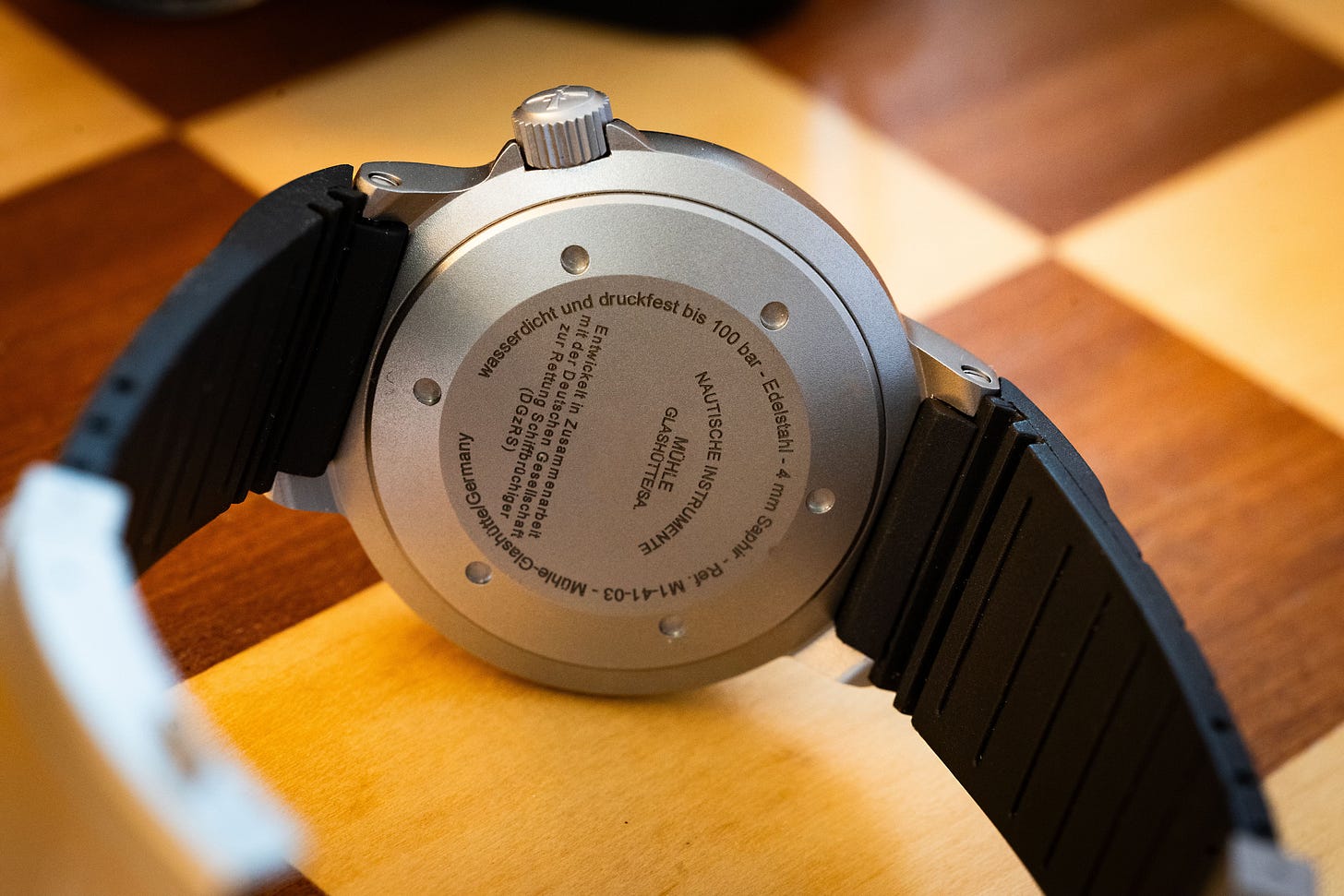
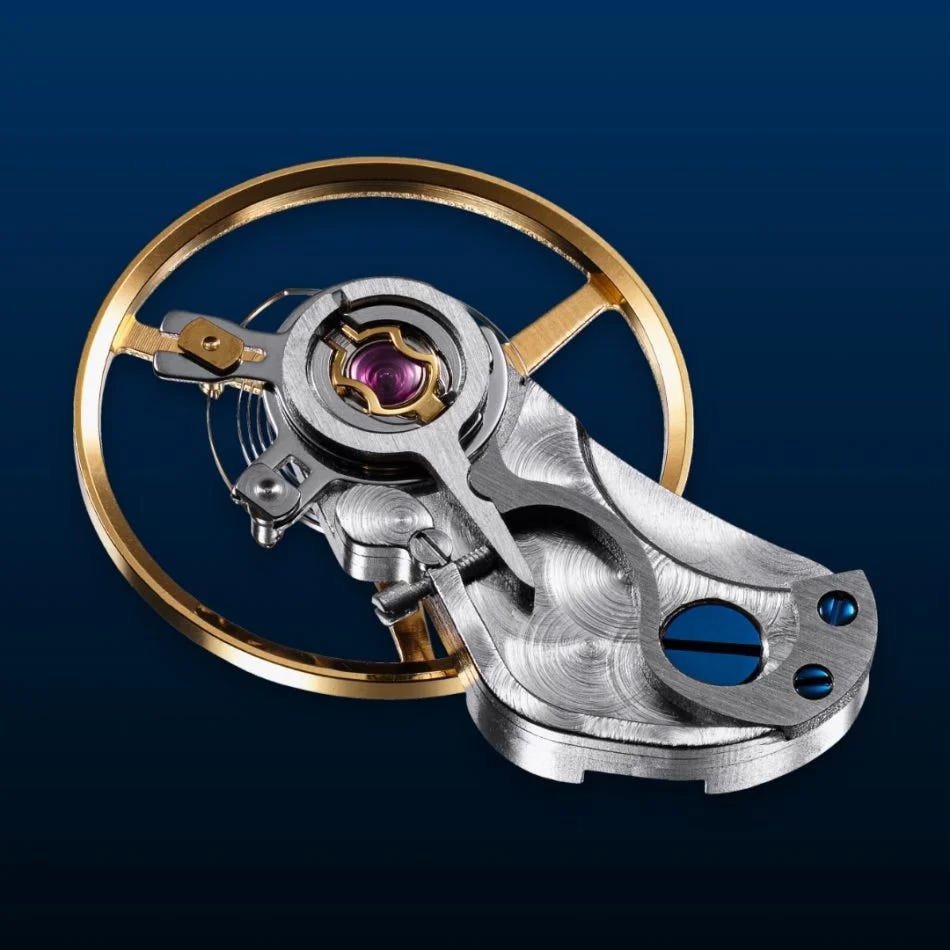

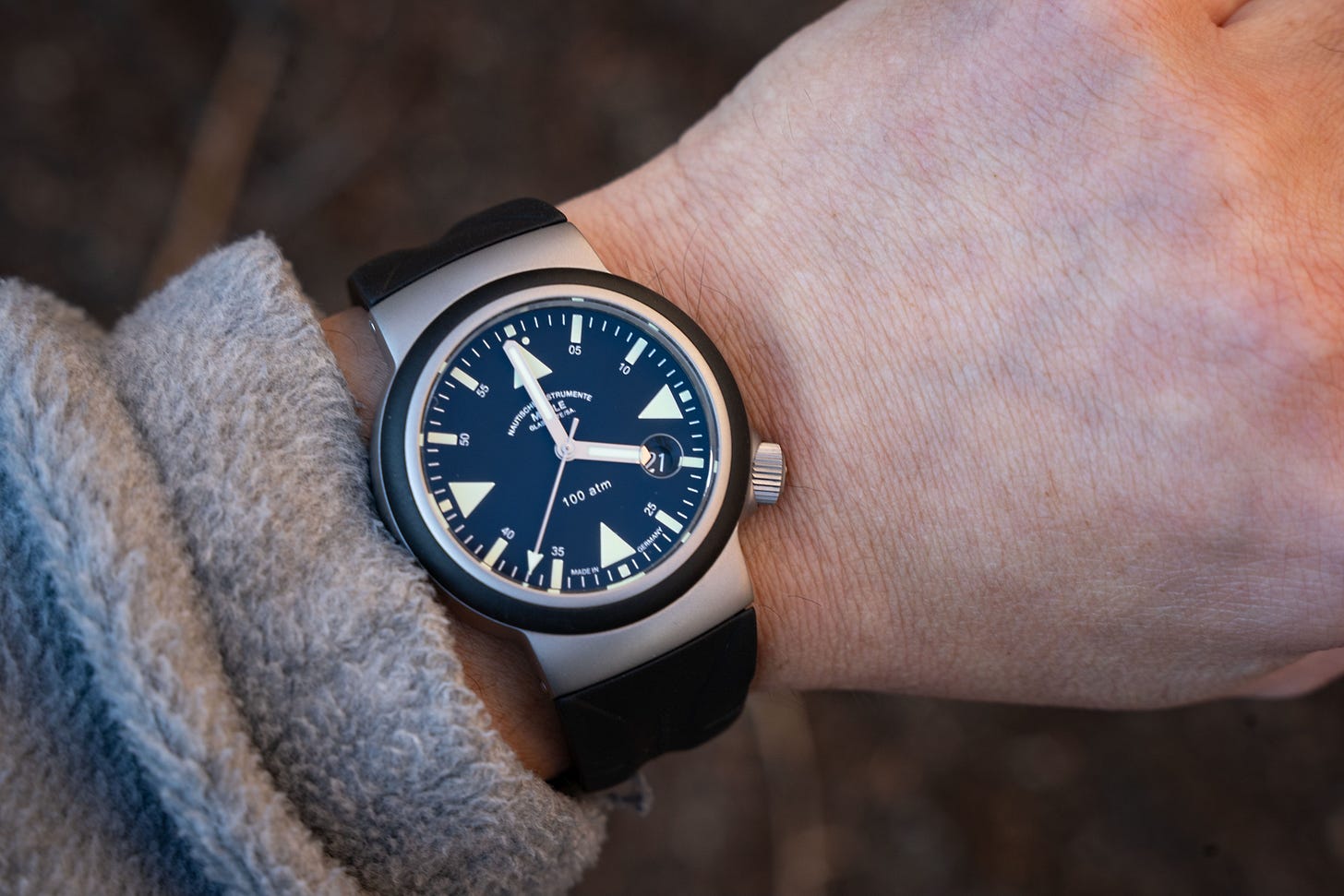
Ah, the joys of pure functionality! It always amazes me that something as seemingly delicate as the escapements of a mechanical watch can survive the beatings they get on the wrists of the people whose boats pound through heavy seas, or soldiers in combat--or, for that matter, on the wrists of of mountain bikers or jackhammer operators. But somehow, they do.
But that cut-to-fit strap--aaarrrgghh! I had a Sinn with a strap like that, and the last cut was nerve-wracking: before it, the strap was a bit too loose. Oh, the dilemma, the hesitation: what if the next cut makes it unpleasantly tight? Deep breath, snip, and... oh crap oh damn, now it's too tight and there ain't no link I can put back on! So my wonderful new Sinn was, well, if it weren't pronounced like Zinn, I'd make the obvious "Sinnfully tight" pun.
I met one of the family at Windup a few summers back. He speaks great English and was interesting to speak with. This watch is not my cup of tea, but they have other, beautiful models. They sit in that insanely competitive $1500-$3,000 price bracket when so many firms slug it out. That said, I love them for simply not being part of some soilless conglomerate. That their watches were high-quality is icing on the cake. That said, my heart seems more inclined to Dornbluth and sons.